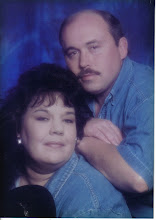 This is the time of year when it is either snowing, raining or freezing, so you really haven’t got a whole lot to do outdoors right now anyway so…why not take the time and plan your garden.
This is the time of year when it is either snowing, raining or freezing, so you really haven’t got a whole lot to do outdoors right now anyway so…why not take the time and plan your garden.You might say within yourself that you really don’t need to plan the garden. You can design and plan your garden as you go along, but every year you end up saying to yourself…” I wish I’d done it different”.Planning a garden is not cumbersome or boring. On the contrary; planning a garden can be fun and make your garden more organized and fruitful. You just have start by getting organized. Here’s a few idea’s that will help to make it fun.
1.)Draw Out Your Garden Plot
There is no better way to draw out your garden plot than with a piece of graph paper. Buy a graph tablet and use it to map out your garden. It’s always best to start your drawing by scale. Know how much space you have in your garden by drawing an outline of your garden. You don’t have to be exact; after all, you’re not building a house. But some gardens are not always square or oblong. Some gardens have different shapes, so it’s best to draw out your garden according to its dimensions.
In drawing out your garden plot in this way, you will be able to best decide where you intend to plant which products. Think about your garden space and remember that some plants take more space to grow than others and try to place plants where you can utilize all the available space. Planting helter-skelter is less labor intensive, but rest assured that without putting some thought into the process…you will be cheating yourself out of all the benefits that a planned garden can offer.
A good example would be to plant your corn on the far end of your garden where it will not shade any of the rest of your garden. Plant pole beans on the outskirts of your corn so that the vines can use the corn as a trellis. You can also plant low growing vines like cucumbers and melons on the outskirts of your corn. This is a space saving idea that I’ve used in my gardens for years. Some of the vine will grow into your corn plot instead of into your garden area. Four or five of the vines grown in this manner can save a lot of space.
2.)Consider Succession Planting
While planning your garden it is also a good idea to decide rather you are going to be doing extra canning or freezing this year. If you are, then it would be a good idea to consider succession planting. The concept of succession planting is great for the gardener who wants to have a continuous supply of fresh fruits and vegetables from the early spring until very late into the fall.
This is a fantastic concept because when one product is done for the year, then you can replace something else in the same exact spot. Of course in doing this you will also have to do a little long range planning.
A good example is to plant something that you will harvest in August or September. You will then pull up the spent vine or remaining plant; throw them into the compost pile and then replace it with a product that likes cooler weather with a shorter growing span. For this I will sometimes use Radish, Lettuce, or something in the Cole family.
3.)Choosing Your Seed
The new seed catalogs should be coming to your door very soon. If you don’t subscribe to any of the seed catalogs; it would behoove you to do so. There are a tremendous amount of catalogs out there, but my best advice is to try and find them from your particular state. These will offer seeds that are more acclimated to your area. However, if there is none available for your state, then do an online search for seed catalogs. When it comes to seed catalogs; there is always an inexhaustible supply.
Of course, I am a huge proponent of Heirloom Seeds, but if you are alright with planting the Hybrids, then by-all-means knock yourself out. Following this article are some websites where you can find some of my favorite seed catalogs.
When choosing my seed, I always put them into three categories.
a. Must have
b. Want to have
c. Can maybe fit in
The “must have” seeds are my staples. Those are the fruits and veggies that I want most. For most everyone the staples are going to be different. My staples might be Radish, Lettuce, Tomatoes, but yours could be Carrots, Cucumbers and Strawberries. This is why planning your garden ahead is so very important. If you have your seed catalogs now; you have the ability to look through them and maybe find seeds that have a shorter harvest time, or have better bug resistance. You might decide to have a bush bean this year versus a pole bean which takes more space. There are a multitude of things to consider, but enjoy the process. Make it a family project and have fun with it. After all, that’s what a garden is supposed to be.
My “want to have” seeds are self explanatory. If I have enough room in the garden, or if I plan to do some extra canning or freezing, or maybe I want to give some more away this year, or it could be that I just want to experiment, then these might be the seeds that I want to grow. And here again I can’t emphasize the need for a little planning ahead of time. If you have drawn out your garden plot and you have your seed catalogs in front of you, then you can have a better idea as to whether you have the space to grow all the things you must have along with all the items that you want to have. Be sure to look at the seeds growing and harvesting time, spacing and zones.
The products that I “can maybe fit in” are those items that I would like to try or maybe experiment with. I do my best to make my garden fun; therefore, I’m going to do a little experimenting to see if I have found myself a new favorite, or maybe I’ve still got a lot of pickles that I canned up from last years garden, so I’m going to try something different in their place this year. It doesn’t hurt to experiment once in a while. Maybe you’ve never grown artichokes before and you would like to give them a try. I say… GO FOR IT!
However, Artichokes can take up some room, so once again you need to do a little planning.
4.)Inter-Planting
In this last segment on garden planning I would like to emphasize the concept of Inter-Planting. Some gardeners might have their own ideas about the process, but I will offer you mine. No matter the size of your garden and no matter what you plant in that garden, be sure to Inter-Plant its entire contents. In my book Simple Gardens Exposed, I go into this process in great detail and will always enforce the concept in whatever garden I grow. I cannot emphasize enough about the value of co-planting Garlic, Herbs and Flowers into garden plot. I am never particular about where I plant these items in my garden, just as long as they are mixed completely and thoroughly into the entire garden. I won’t go into the entire process here because it is to lengthy; however, if you want the why’s and wherefores of the process, then you can download my book for only $12.95.
Of course my book contains a great deal about how to make gardening simple, but it will also tell you the value of the Inter-Planting process. Inter-Planting can be one of the most valuable methods you can use for your garden, so when you are making your garden plans; don’t forget to incorporate this method onto your garden graph.
In closing; this article is mainly meant to serve as a reminder that garden planning can make your gardening simple and less time consuming. It is not for me to say how you plant your garden or what products to fill it with; however, in creating a garden plan, you will certainly be able to achieve the most that your garden plot has to offer.
My Hope is that your New Gardening year is a bountiful one!
My Favorite Garden Catalog Sites:
Heirloom Seeds
Heirloom Seeds.com
Territorial Seed Co.
Johnnys Seed Co.
Jung Seed Co.Read more!






